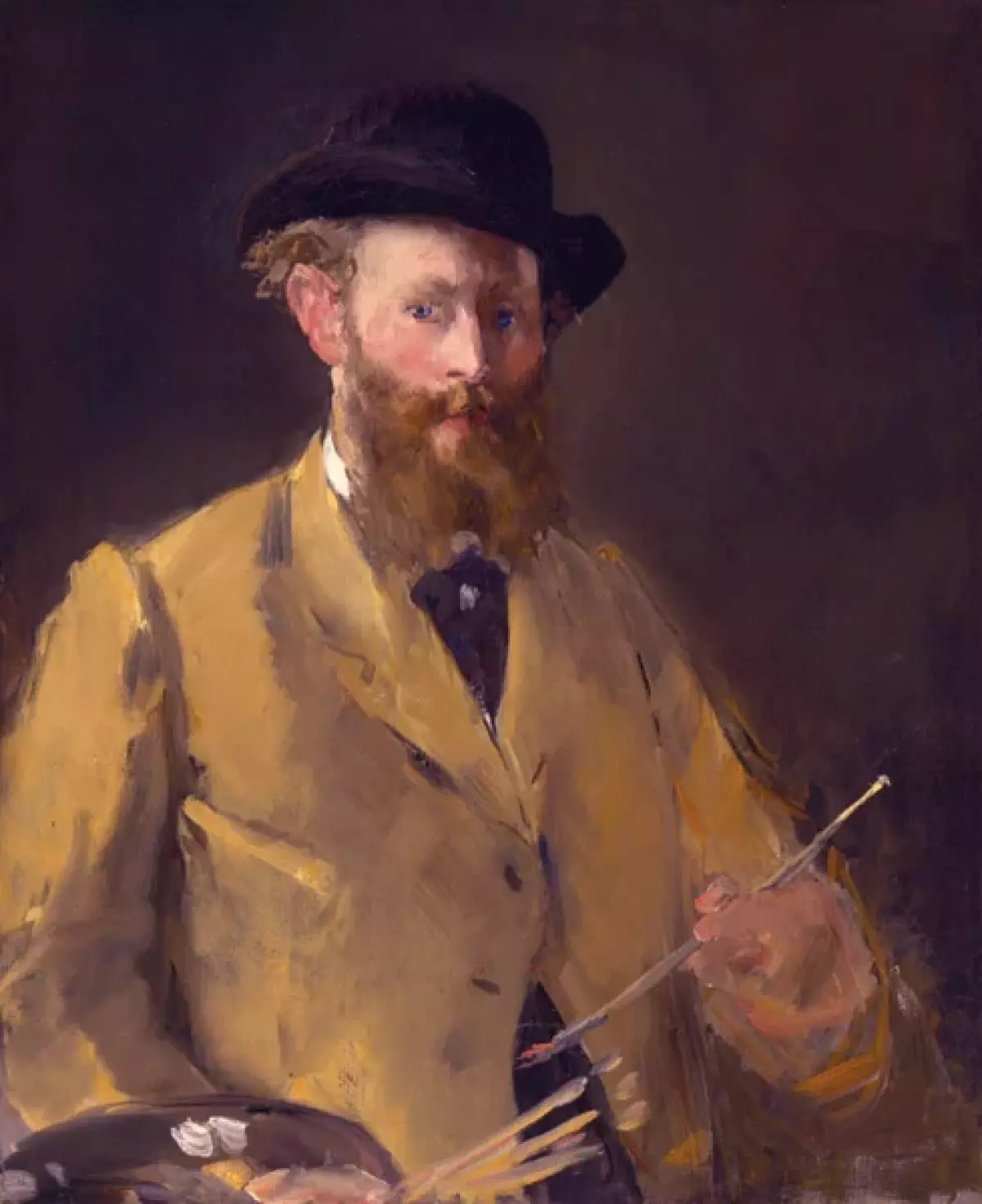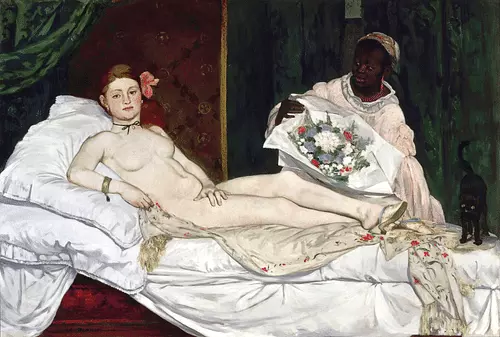 Self-portrait with a Palette by Manet (by The Yorck Project, Public Domain)
Self-portrait with a Palette by Manet (by The Yorck Project, Public Domain)
Edouard Manet (1832-1883), a French modernist painter, is hailed as a pioneer of candid realism in art. His works, such as "Olympia," challenged the conventions of his time by depicting contemporary life. In capturing the essence of Parisian café society, Manet paved the way for later artists to break free from artistic norms and embrace their own individuality.
Early Life
Born into a wealthy family in Paris on January 23, 1832, Manet's upbringing was filled with privilege. His father, Auguste, was a high court judge, and his mother, Eugénie Désirée Fournier, came from a well-connected background. Despite his privileged upbringing, Manet's artistic inclinations were fostered by his uncle, Edmond Fournier, who introduced him to the world of art through sketches and visits to galleries in Paris. Although Manet's academic performance was unremarkable during his school years at the prestigious Collège Rollin, his lifelong friendship with journalist Antonin Proust was formed during that time.
Undeterred by a failed attempt to join the French Navy in 1848, Manet embarked on a voyage to Rio de Janeiro as a cadet. This journey provided him with ample opportunity to hone his skills as an artist by sketching fellow mariners and the vast sea.
Artistic Influences
Upon returning to France, Manet convinced his father to let him pursue a career in art. He enrolled in the school of Thomas Couture in 1850, despite his father's initial resistance. Manet drew inspiration from past masters such as Diego Velázquez and their use of dark backgrounds, flat figures, and contrasting light and shade. His travels to Italy, Germany, the Netherlands, and Belgium in the 1850s further exposed him to the freedom with which Dutch and Italian contemporary artists painted everyday life. Additionally, Japanese prints, with their unique composition and cutting of scenes, left a lasting impression on Manet and his contemporaries.
 The Absinthe Drinker by Manet
The Absinthe Drinker by Manet
Manet's artistic style was also influenced by the Romantic painter Eugène Delacroix, who embraced visible brushstrokes as a deliberate technique. Gustave Courbet's realist approach, which depicted everyday peasant life, using bold brushwork, also captivated Manet. Frustrated with the traditional methods taught in art schools, Manet sought inspiration from artists like Delacroix and Courbet, who had successfully broken away from the confines of the Salon system. In February 1856, Manet established his own studio and embarked on a journey of artistic experimentation. His first major breakthrough came with "The Absinthe Drinker" in 1859, which portrayed the search for ordinary subjects that would become a hallmark of his work.
Appearance & Family
Contrary to the stereotype of a bohemian artist, Manet was a dapper and sophisticated gentleman. Sporting a red-blonde beard and often seen in fine clothes, complete with a top hat and cane, he strolled through Parisian café society, embodying the essence of a flâneur. With his charm and optimism, Manet effortlessly made friends wherever he went.
In 1849, Manet met Suzanne Leenhoff, a Dutch girl who would later become his wife. Suzanne worked as a piano teacher for Manet's father, and their relationship blossomed into something more. They likely had a child together, Léon-Edouard, born in January 1852, but due to the potential scandal it would have caused, Léon-Edouard was raised as Suzanne's younger brother. Although Manet never formally acknowledged his son (except indirectly in his will), both Suzanne and Léon-Edouard appeared in many of his paintings, portraying a sense of calm domestic life. Another significant woman in Manet's life was Berthe Morisot, an impressionist painter who eventually married his brother. Additionally, his most notable pupil, Eva Gonzalés, also played a crucial role in his artistic journey.
 Olympia by Manet
Olympia by Manet
Challenging Conventions
Manet's artistic style and choice of subjects shocked the art establishment of his time. He deliberately left visible brushstrokes, deviating from the traditional practice of creating seamless textures. Manet's decision to depict everyday Parisian life, including café culture, ordinary people, and imaginative still lifes, was in direct contrast to the conservative art world and the Paris Salon, where his works were exhibited and sold.
One of the most controversial works by Manet was "Lunch on the Grass" (Déjeuner sur l’herbe) in 1863. This painting depicted a seemingly ordinary picnic scene, but Manet scandalized the art world by dressing the figures in contemporary attire, including one partially dressed woman and another fully nude, who defiantly looked directly at the viewer. The Salon rejected the painting due to its overt modernity and Manet's unconventional brushwork and vivid colors. Emperor Napoleon III even described it as "an offense against modesty." Despite the outcry, "Lunch on the Grass" became a symbol of Manet's revolutionary approach to art.
Similarly, Manet's "Olympia," exhibited in 1865, caused a sensation with its portrayal of a confident nude courtesan, depicted reclining on her bed while staring directly at the viewer. Critics berated Manet for his audacity, calling him a "brute who paints green women with dish brushes." The painting challenged societal norms and expectations, not only through its subject matter but also through its unconventional use of color and composition.
 Lunch on the Grass by Manet
Lunch on the Grass by Manet
Legacy
Manet's groundbreaking style and willingness to challenge artistic conventions had a profound impact on his contemporaries and subsequent generations of artists. His rejection of idealized subjects in favor of depicting everyday life paved the way for the emergence of new art movements. Artists such as Paul Gauguin, Henri de Toulouse-Lautrec, and Henri Matisse, among others, drew inspiration from Manet's defiance of traditional norms.
Despite facing rejection and criticism during his lifetime, Manet's legacy endures. His works can be found in prestigious collections around the world, including the Louvre. Manet's contributions to the art world continue to be celebrated, and his unwavering commitment to painting life as he saw it remains an inspiration to artists and art enthusiasts alike.
 The Balcony by Manet
The Balcony by Manet
Note: All images in this article are sourced from the original article on tzm.vn and are used for illustrative purposes only.
















